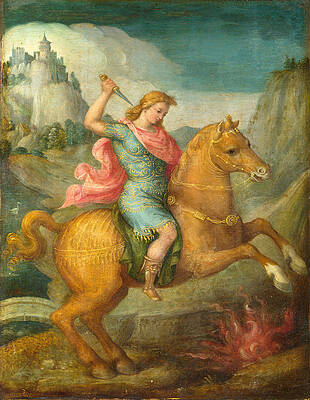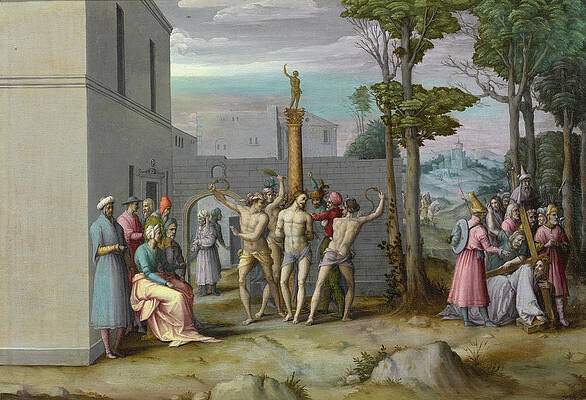Bacchiacca or Francesco d'Ubertino Verdi, also known as Francesco Ubertini, il Bacchiacca
Paintings
The Gathering of the Manna
Portrait of a Woman with a Book of Music
Marcus Curtius
Joseph pardons his Brothers
Joseph receives his Brothers
Madonna and Child with St. John
Madonna and Child
The Flagellation
Leda and the Swan
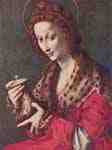
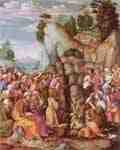
Moses Striking Water from the Rock
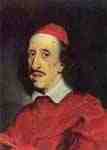
Fine Art Prints | Greeting Cards | Phone Cases | Lifestyle | Face Masks | Men's , Women' Apparel | Home Decor | jigsaw puzzles | Notebooks | Tapestries | ...
Joseph receives his Brothers
Francesco d'Ubertino Verdi, called Bachiacca [also known as Francesco Ubertini, il Bacchiacca] (1494–1557) was an Italian painter of the Renaissance whose work is characteristic of the Florentine Mannerist style.
Biography
Bachiacca was born and baptized in Florence on March 1, 1494 [modern] and died there on October 5, 1557.[2] He apprenticed in Perugino's Florentine studio, and by 1515 began to collaborate with Andrea del Sarto, Jacopo Pontormo and Francesco Granacci on the decoration of cassone (chest), spalliera (wainscot), and other painted furnishings for the bedroom of Pierfrancesco Borgherini and Margherita Acciauoli.[3] In 1523, he again participated with Andrea del Sarto, Franciabigio and Pontormo in the decoration of the antechamber of Giovanni Benintendi.[4] While he established a reputation as a painter of predellas and small cabinet pictures, he eventually expanded his output to include large altarpieces, such as the Beheading of St. John the Baptist, now in Berlin.
Francesco Bacchiacca, Madonna and Child with St John, 1525, Dallas Museum of Art
In 1540, Bachiacca became an artist at the court of Duke Cosimo I de' Medici (reg. 1537-1574) and Duchess Eleanor of Toledo. In this capacity, Bachiacca was a colleague and peer of the most important Florentine artists of the age, including Pontormo, Bronzino, Francesco Salviati, Tribolo, Benvenuto Cellini, Baccio Bandinelli, and his in-law Giovanni Battista del Tasso. Bachiacca's first major commission was to paint the walls and ceiling of the duke's private study with plants, animals and a landscape, which remain an important testimony of Cosimo's interest in botany and the natural sciences.[5] Bachiacca also made cartoons for two series of tapestries, the Grotesque Spalliere (1545–49) and the Months (1550–1553), which were woven by the newly founded Medici tapestry works.[6] Francesco signed only one known work, the decoration of a Terrace for the duchess and her children, with his abbreviated Christian name and nickname: "FRANC. BACHI. FACI."[7] All of these works either contain carefully observed illustrations of nature or display the artist's trademark method and style, in which Bachiacca combines figures, exotic costumes and other motifs acquired from Italian artists and German and Netherlandish prints into entirely new compositions. These cosmopolitan assemblages exhibited the most praiseworthy elements of both northern and southern European Renaissance art, which appealed to their courtly clientele.
As a court painter, he created Saint Sebastian during the 1530s-1540s, illustrating the death of Saint Sebastian, a Christian nobleman condemned to death by the Roman emperor Diocletian. Originally it is theorized that the panel may have functioned as a section to an altarpiece.[8]
Bachiacca belonged to a family of at least five, and possibly as many as eight artists. His father Ubertino di Bartolomeo (ca. 1446/7-1505) was a goldsmith, his older brother Bartolomeo d'Ubertino Verdi (aka Baccio 1484-c.1526/9) was a painter, and his younger brother Antonio d'Ubertino Verdi (1499–1572)—who also called himself Bachiacca—was both an embroiderer and painter. Francesco's son Carlo di Francesco Verdi (-1569) painted and Antonio's son Bartolomeo d'Antonio Verdi (aka Baccino -1600) worked as an embroiderer. This latter generation probably continued to produce paintings and embroideries after Bachiacca's death and until the Verdi family extinguished about the year 1600.[9]
Works
His works include:
Predella with the Life of St. Achatius and the Ten Thousand Martyrs, 1521, Uffizi Gallery[1]
Portrait of a Young Lute Player, 1520-25, New Orleans Museum of Art
Ghismonda with Heart of Guiscardo, 1520s, Lowe Art Museum
Madonna and Child with St. John, c. 1525, Dallas Museum of Art
Saint Sebastian, c. 1530s-1540s, Birmingham Museum of Art
The Gathering of Manna, c. 1540/1555, National Gallery of Art, Washington D.C.
Deposition (Uffizi Gallery)
Conversion of Saint Paul (Memorial Art Gallery, Rochester, New York)
References
The correct period spelling (and the one used by the artist himself) is Bachiacca, with one initial c, like Machiavelli (not "Macchiavelli" [sic]). Italian scholars also prefer Bachiacca, whereas Anglophone scholars favor Bacchiacca [sic]. La France 2008, 127.
In the Renaissance, the Florentine New Year began on March 25, the Feast of the Annunciation. Thus, the birth date is recorded in documents as March 1, 1493 Florentine style, which is March 1, 1494 modern style. Archivio dell'Opera di Santa Maria del Fiore, Florence, Battesimi maschi 1492-1501, 33v.
La France 2008, 141-150, cat. 8-13.
La France 2008, 174-80, cat. 32-33
La France 2008, 220-223, cat. 65; Francesco Vossilla, "Cosimo I, lo scrittoio del Bachiacca, una carcassa di capodoglio e la filosofia naturale," and Maria Adele Signorini, "Sulle piante dipinte del Bachiacca nello scrittoio di Cosimo I a Palazzo Vecchio," Mitteilungen des Kunsthistorischen Institutes in Florenz 37, no. 2/3 (1993): 381-407.
La France 2008, 229-244, cat. 69-78 and 257-264, cat. 85-88; Lucia Meoni, Gli arazzi della collezione fiorentina: le manifatture medicee da Cosimo I a Cosimo II, 1545-1621 (Florence: Sillabe), 1998, 172-184 and 143-146.
La France 2008, 364-267, cat. 89.
Birmingham Museum of Art (2010). Birmingham Museum of Art : guide to the collection. [Birmingham, Ala]: Birmingham Museum of Art. p. 159. ISBN 978-1-904832-77-5.
La France 2008, 32-38.
Sources
La France, Robert G. (2008). Bachiacca: Artist of the Medici Court. Leo S. Olschki. [2]
Freedberg, Sydney J. (1993). Pelican History of Art, ed. Painting in Italy, 1500-1600. Penguin Books. p. 240.
----
Fine Art Prints | Greeting Cards | Phone Cases | Lifestyle | Face Masks | Men's , Women' Apparel | Home Decor | jigsaw puzzles | Notebooks | Tapestries | ...
----
Artist
A - B - C - D - E - F - G - H - I - J - K - L - M -
N - O - P - Q - R - S - T - U - V - W - X - Y - Z
Retrieved from "http://en.wikipedia.org/"
All text is available under the terms of the GNU Free Documentation License





